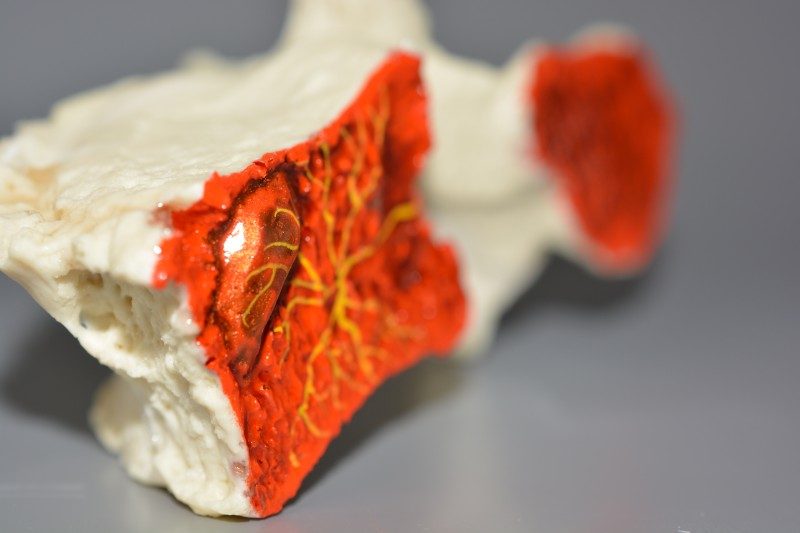Modic changes were first written about in 1988 (just eight years after the first clinical MRI image was performed) by Dr. Modic in a paper titled “Imaging of Degenerative Disk Disease,” laying out his observations.
He classified differences in MRI T1 and T2 weighted imaging of degenerative discs into three categories: type 1, 2 and 3. His foundational work paved the way for other researchers to investigate what he saw and, importantly, to try and find a correlation to LBP.
In 2007, authors saw a correlation between these changes and LBP. They also saw how disc herniation could predict these classic Modic findings. Interestingly, they reported how disc herniation sets the stage to develop the earliest Modic changes; in particular, Type 1 is thought to be more painful. For many years type 2 Modic was considered the symptomatic type, but more recent reviews believe that it is Type 1 that is more correlative to acute back pain.

Dynamic Disc Designs has developed Basivertebral Model, with advice from Dr. Modic, to help expose this commonly found pain generator.
Modic changes refer to changes in the vertebral endplates and adjacent vertebral bodies in the spine, particularly in the lumbar (lower back) region. These changes are characterized by inflammation, degeneration, and changes in the bone tissue, and they have been linked to low back pain.
There are three types of Modic changes Type 1, Type 2, and Type 3.
Type 1 Modic is characterized by inflammation and edema (swelling) of the vertebral endplate and adjacent bone tissue. This type of Modic change is thought to be the result of an acute injury or infection, typically accompanied by pain.
Type 2 Modic is characterized by degeneration and sclerosis (hardening) of the vertebral endplate and adjacent bone tissue. This type of Modic change is thought to result from chronic inflammation and is often associated with chronic low back pain.
Type 3 Modic is characterized by degeneration and increased bone density of the vertebral endplate and adjacent bone tissue. This type of Modic change is thought to result from prolonged immobility or disuse, and it may be accompanied by pain.
The relationship between Modic changes and low back pain is complex and not fully understood. Some studies have found a link between Modic changes and low back pain, while others have not. It is thought that Modic changes may contribute to low back pain by altering the mechanical properties of the vertebral bodies, leading to increased stress on the surrounding tissues and inflammation.
Treatment for Modic anatomy and low back pain typically involves a combination of medications, physical therapy, and other conservative measures. In some cases, surgery may be necessary to address underlying issues such as spinal stenosis or herniated discs.
Modic findings in the bone tissue of the spine have been linked to low back pain. While the relationship between Modic changes and low back pain is not fully understood, treatment typically involves a combination of medications, physical therapy, and other conservative measures.
